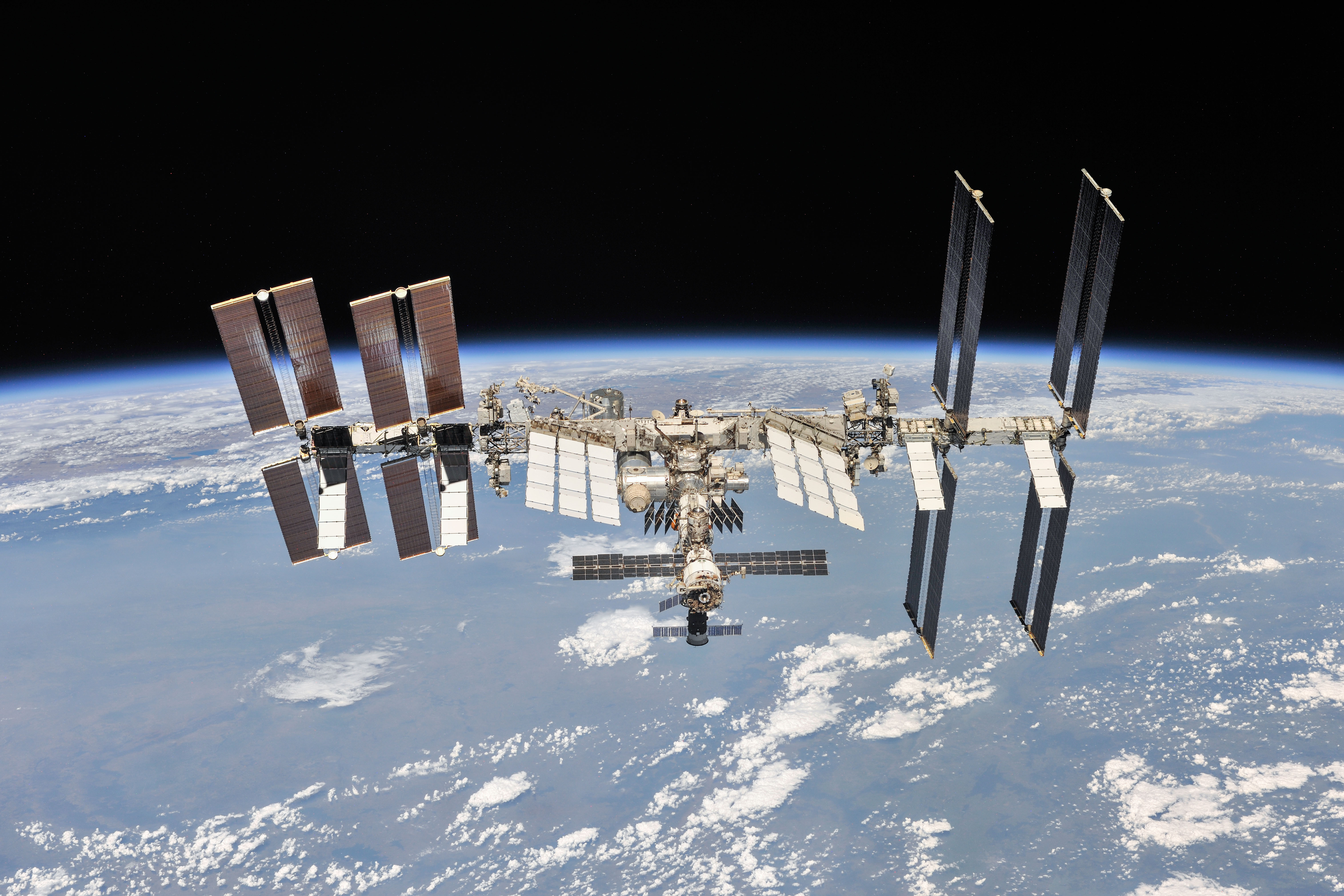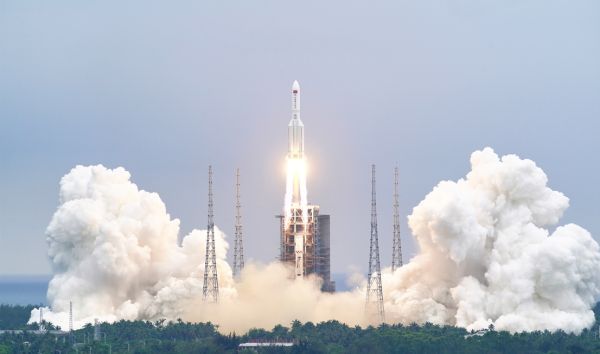Can the US and China Cooperate in Space?

Will collaboration or competition define international space science and exploration in the 21st century? The answer could come down to how two spaceflight superpowers, the U.S. and China, choose to engage with each other in the next few years.
The U.S. remains the global leader in space by most metrics, but China is methodically advancing its own ambitious space agenda at a quickening pace, blueprinting and carrying out a succession of robotic interplanetary forays to destinations such as the asteroid belt and Jupiter, as well as a sample-return mission to Mars. Layered into the mix is China's five-year plan for moon exploration, which, in a recently announced partnership with Russia, would lead to both countries jointly building an International Lunar Research Station that would be tended by human crews.
In the meantime, nearer to Earth, China is rapidly constructing its “Heavenly Palace,” the multimodular Tiangong space station. A core segment of the station is already aloft and operational, housing a three-person crew. By late next year, a rapid-fire launch schedule of more astronauts, supply ships and add-on modules should bring assembly of China’s orbital outpost to its conclusion. The China Manned Space Agency has reportedly given provisional approval to stuff the station with more than 1,000 scientific experiments. And it is inviting foreign participation via the United Nations.
China On the Moon! A History of Chinese Lunar Missions in Pictures
What impact China's space schedule, along with the country's joint ventures with Russia, may have on U.S. space exploration objectives remains to be seen. But some experts suggest it might be time for the U.S. to search for common ground in shaping a more inclusive multination space agenda.
For now, however, restrictive legislation makes this far more easily said than done. In 2011 Congress passed a law that included an add-on known as the Wolf Amendment. Named after its mastermind, then representative Frank Wolf of Virginia, the Wolf Amendment prohibits NASA from using federal funds to engage in direct, bilateral cooperation with the Chinese government. Ever since, a potential repeal of the amendment has been a political football, tossed between hawkish factions eager to paint China as an emerging adversary in space and less combative advocates wishing to leverage the country’s meteoric rise in that area to benefit the U.S.
Shifting alliances

"I think we're going to see a mixture of cooperation and competition, probably between two blocs: one led by the U.S. and one led by China. And that’s not necessarily a bad thing," says John Logsdon, a professor emeritus at George Washington University’s Elliott School of International Affairs and founder and former long-time director of the university's Space Policy Institute. "After all, it was [U.S. versus Soviet] competition that got us to the moon. There is competition between the U.S. and China for global leadership."
As for China and Russia cozying up to each other to install an International Lunar Research Station, Logsdon suggests the U.S.'s reaction has thus far been inconsistent. "Half the time, we complain about [China's and Russia's] lack of transparency. But then when they make explicit their plans, we’re not happy either," he says. In the aftermath of the Soviet Union's collapse,
Russia turned to the U.S. in 1993 [to help build the International Space Station] to save their space program. And now I think they are turning to China to do much the same."
Get the Space.com Newsletter
Breaking space news, the latest updates on rocket launches, skywatching events and more!
Is it time to work more closely with China, perhaps starting with a repeal of the Wolf Amendment? Logsdon thinks so, though he underscores that many of his peers disagree. "It's a legitimate issue for policy debate," he says, "and repeating the Wolf Amendment every year in legislation is a convenient way of avoiding that debate." For now, Logsdon adds, the U.S. should use diplomatic and scientific channels to test the waters for future work with China, establishing whether any partnership could be mutual beneficial, let alone possible. "China may — or we may — decide [to say] no," he says. "But right now we really can’t engage to make that decision."
Fundamentally, however, Logsdon rejects the assertion that China and the U.S. are destined to engage in another space-based contest akin to the U.S.-Soviet rivalry during the cold war. "Sure there is competition, but it's not a race," he says.
Case-by-case in space
Bill Nelson, a former senator of Florida and now NASA's 14th administrator, would be the first to disagree. The two nations are very much in a space race already, he says, and the U.S. must be wary.
"I think we have a very aggressive China and, I add, [a] thus far successful" China, he says. "They said they'd put up a space station, and they did. [They said they would] bring back lunar samples, and they've done so. They are the second nation to robotically land and rove on Mars. [And] they plan to put boots on the moon."
"They put it out there ..., and then they usually follow through," Nelson says. "The Chinese civilian space program is, in reality, their military space program. That's why I think we are going into a space race with China."
Even before arriving at NASA, Nelson was familiar with China's space ambitions. For six years, he chaired the space subcommittee in the U.S. House of Representatives, and he later served as ranking member of the Senate Committee on Commerce, Science, and Transportation — both positions in which a thorough situational awareness of geopolitical space activities was essential.
On the prospect of working with China, Nelson muses about how things evolved with the former Soviet Union, once "our mortal enemy." In part because of each nation’s huge nuclear arsenal and the associated threat of mutually assured destruction, the U.S. and the Soviet Union eventually reached a stalemate that extended into space, where cooperation rather than competition reigned. The jointly built ISS—circling Earth every 90 minutes and continuously crewed for more than two decades by astronauts and cosmonauts alike — is the shining example of what collaboration can achieve. "Things don't go swimmingly on terra firma..., but in space they do," he says.
Related: China's Chang'e Program: Missions to the Moon

That is the relationship Nelson wishes the U.S. had with China, too. But unfortunately, he says, for now, the latter nation’s penchant for secrecy stands in the way of any similar partnership. More openness is required. "Leadership in space is leadership in a transparent way for all nations to join you," he says. If, however, the choice is made to pursue any work with China on its space program, "it calls for a certification from me that it does not affect our national security. So we'll take it on a case-by-case basis."
One case could be working with China to facilitate sharing some of the nation’s prized specimens from its recent and highly successful Chang'e-5 lunar-sample-return mission. Per the Wolf Amendment, Nelson says, as long as U.S. researchers do not utilize any NASA funds and keep NASA-funded university projects separate from any Chinese-related projects, there is no prohibition on American researchers asking for, and receiving, those lunar collectibles.
Similarly, China's Martian-sample-return initiative is another future prospect. “Their Mars samples would be coming back about the same time that ours would, so that’d be a great opportunity,” Nelson suggests.
Harmony in the heavens?
There are, of course, ways that the newly announced space partnership between China and Russia can strengthen the U.S. even without meaningful cooperation. It could, for instance, compel the White House and Congress to open floodgates of money to pour into the U.S.'s civil and military space programs, says Marcia Smith, a veteran analyst who runs the Web site SpacePolicyOnline.com. But whether this would yield sufficient funding to meet the goals of NASA’s Artemis program — namely, landing astronauts back on the moon as early as 2024 — is another question. The China-Russia lunar research base, Smith says, does not envision human lunar landings until 2036 or later, "so it’s not much of a race."
Alternatively, because the Wolf Amendment does allow NASA to work with China under certain, very restrictive circumstances, perhaps more robust collaboration is still in the cards.
"If NASA can convince Congress that [any] proposed cooperation does not create the possibility for technology transfer or involve officials determined by the U.S. to have direct involvement in violating human rights, it can get approval," Smith says. "And it only restricts bilateral, not multilateral, cooperation." Even so, she adds, at present, there is very little NASA-China space cooperation to speak of and no indication that this will change anytime soon.
Meanwhile the U.S. still shares responsibility with Russia in maintaining and building upon the decades-long multinational human space exploration program that led to the creation of the ISS. NASA, Smith says, hopes Russia will not only remain a partner on the ISS but will also help build a planned lunar Gateway space station for the agency’s Artemis program.
"Perhaps Russia will choose to work with China, as well as with the U.S.-led multinational effort. But getting all three working in harmony to explore the heavens? Not without dramatic geopolitical changes that are nowhere to be seen in my crystal ball," Smith concludes.
Deep-space power dynamics

Just how much space cooperation two authoritarian systems can actually achieve is unclear, says Dean Cheng, a senior research fellow on Chinese political and security affairs at the Heritage Foundation's Asian Studies Center in Washington, D.C. "Announcements are easy. Actual cooperation is hard," he says.
"Russia seems to be the weaker of the partners in any Russia-China space relationship," Cheng adds. "And Russia doesn't handle being the weaker partner well, whether it is with the West after the collapse of the former Soviet Union or, in all likelihood, with China."
The U.S., he notes, does well when cooperating with other states that demonstrate transparency, as well as respect for intellectual property and the rule of law with regard to human rights and national sovereignty — all areas where tensions with China have flared. This history of conflict and its probably continuation in the future makes Cheng skeptical of any near-term hopes for cooperation between the two nations in space.
Brown University planetary scientist Jim Head, a leading expert on space exploration, works multilaterally with both Russian and Chinese space scientists, as well as his European colleagues, on analyzing landing sites for future interplanetary missions. Whether in conflict or collaboration, he says, the one constant to China’s space aspirations is that they will not stop.
"China is on the 'silk road' to space," Head quips. "They are doing it; there's no question about that. Their space program is important to them, and it establishes national pride and prestige. It is not just good for science but for everything [the nation does]. If we sit and bury our heads in the sand and don't do anything ourselves, they are still going. They are not waiting for us."
China is already nearing a leadership position in lunar science, Head says, because it has demonstrated that it can send sample-return spacecraft to both the moon’s near and far sides, and it “can basically pump them out like sausages.”
Rather than await a heavy lift from the White House to change the Wolf Amendment, Head suggests it could be more fruitful for scientists to petition Congress for an exception so that they can work bilaterally with their Chinese peers on space projects. A way forward could be through the Inter-Agency Consultative Group for Space Science, an informal collective of researchers from major space agencies that executes interagency coordination on select missions.
Having China become a signatory of the Artemis Accords might be a productive pathway, too, Head adds. Led by the U.S. Department of State and NASA, these accords describe a shared vision for principles, grounded in the Outer Space Treaty of 1967, to create a safe and transparent environment that facilitates exploration, science and commercial activities on the moon. As of this writing, a dozen countries have embraced the Artemis Accords: Australia, Brazil, Canada, Italy, Japan, Luxembourg, New Zealand, South Korea, Ukraine, the United Arab Emirates, the U.K. and the U.S.
"The solar system is such a big place. If we're all duplicating everything individually, that is just stupid. So collaboration, cooperation, coordination — I think that’s absolutely the way to go," Head concludes.
This story was provided by Scientific American. You can read the original story here.
Join our Space Forums to keep talking space on the latest missions, night sky and more! And if you have a news tip, correction or comment, let us know at: community@space.com.

Leonard David is an award-winning space journalist who has been reporting on space activities for more than 50 years. Currently writing as Space.com's Space Insider Columnist among his other projects, Leonard has authored numerous books on space exploration, Mars missions and more, with his latest being "Moon Rush: The New Space Race" published in 2019 by National Geographic. He also wrote "Mars: Our Future on the Red Planet" released in 2016 by National Geographic. Leonard has served as a correspondent for SpaceNews, Scientific American and Aerospace America for the AIAA. He has received many awards, including the first Ordway Award for Sustained Excellence in Spaceflight History in 2015 at the AAS Wernher von Braun Memorial Symposium. You can find out Leonard's latest project at his website and on Twitter.

